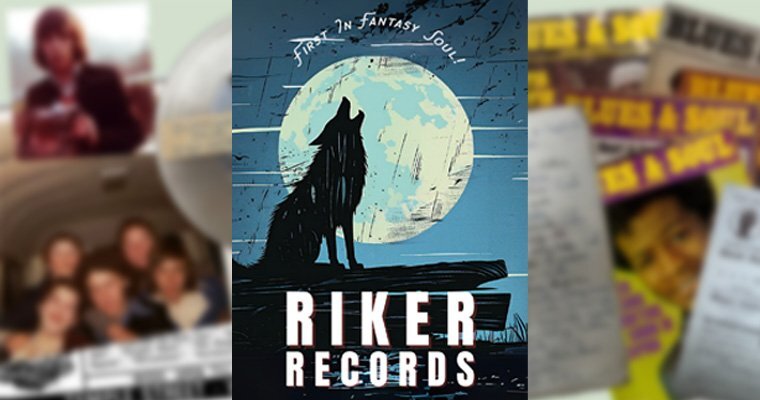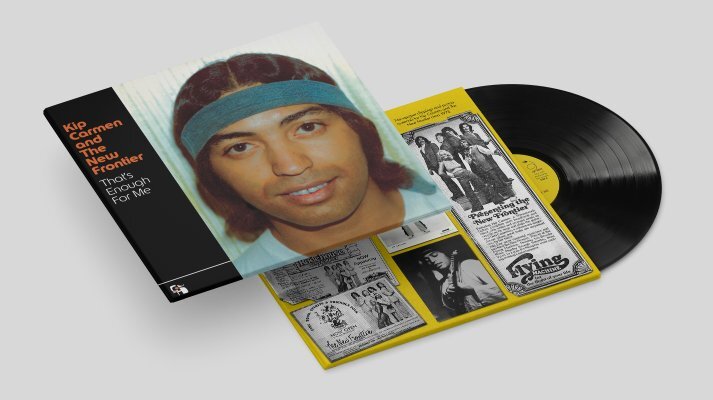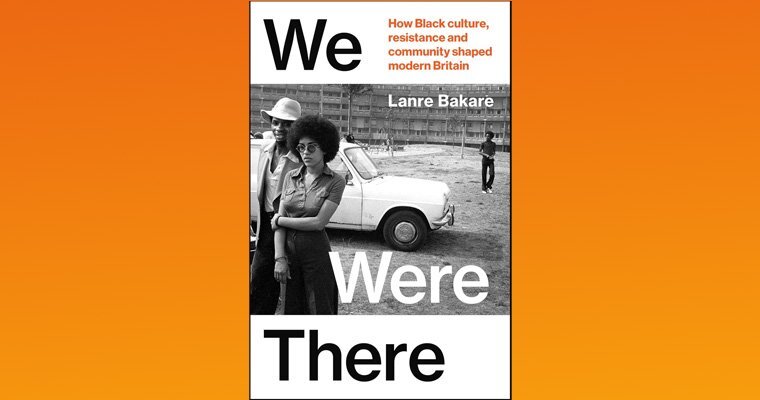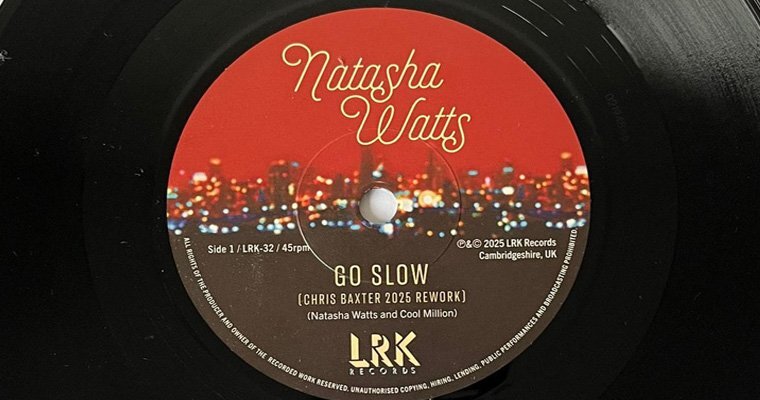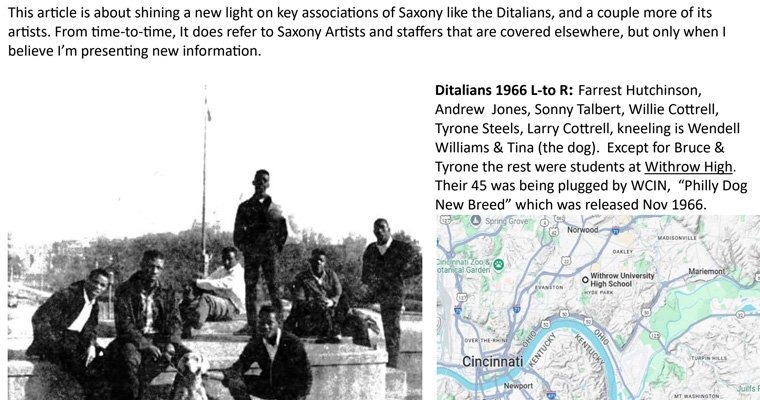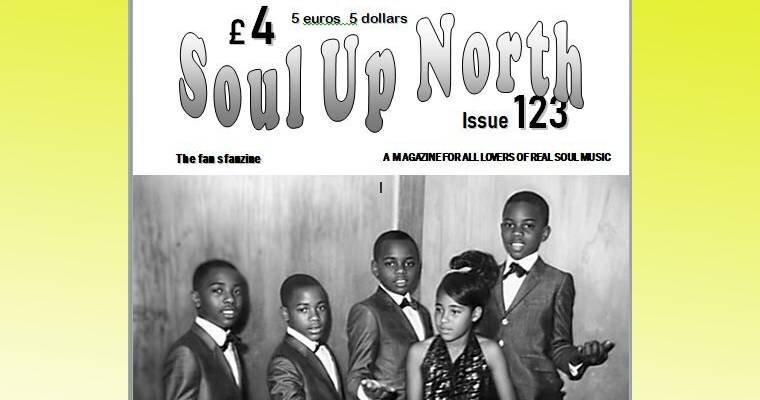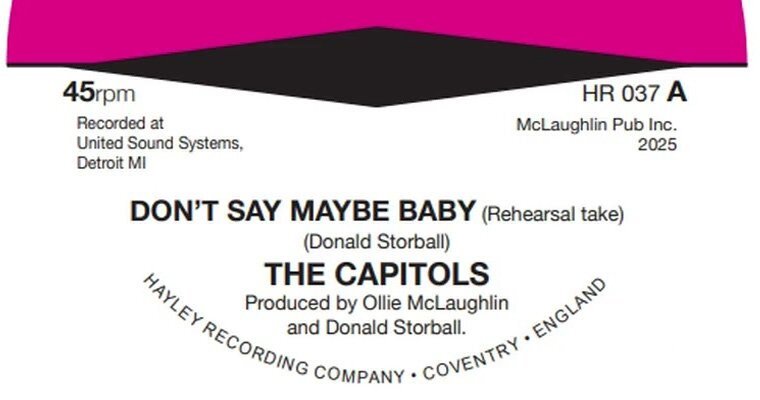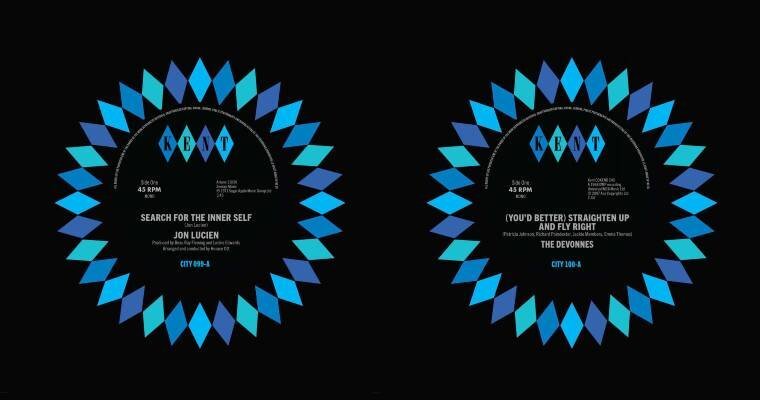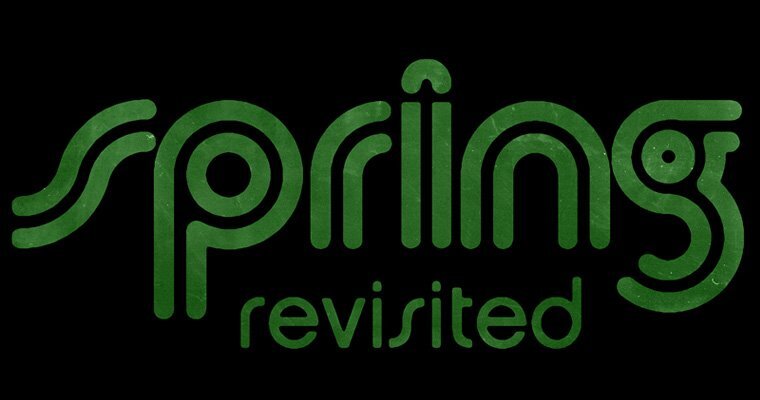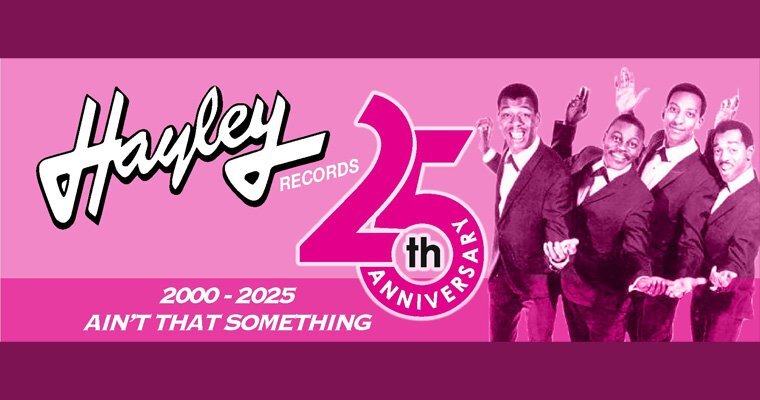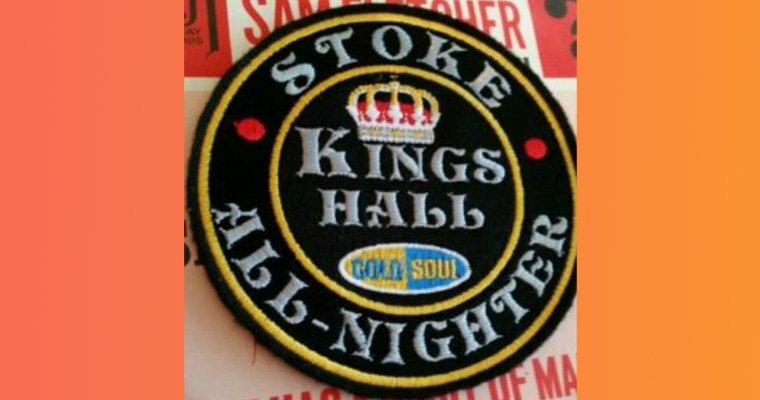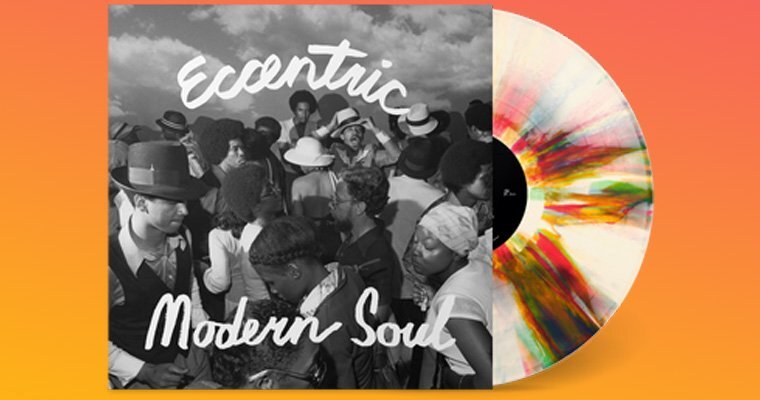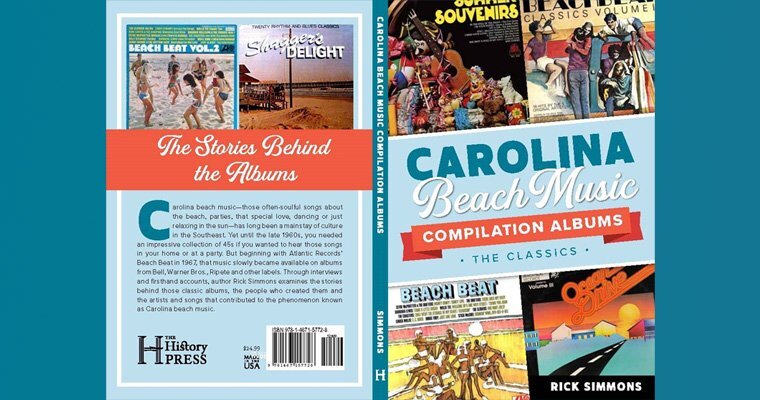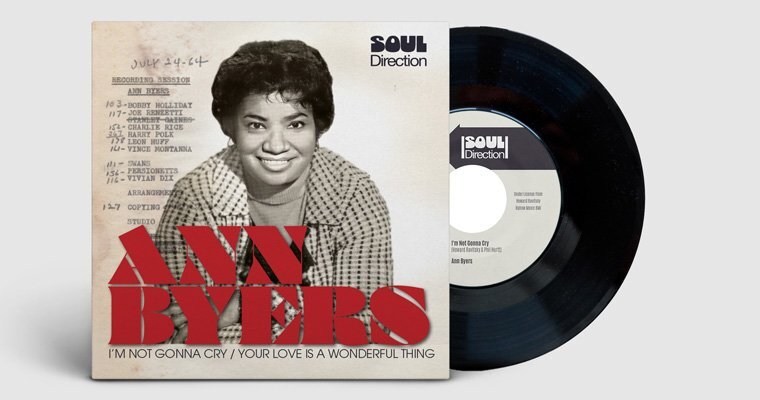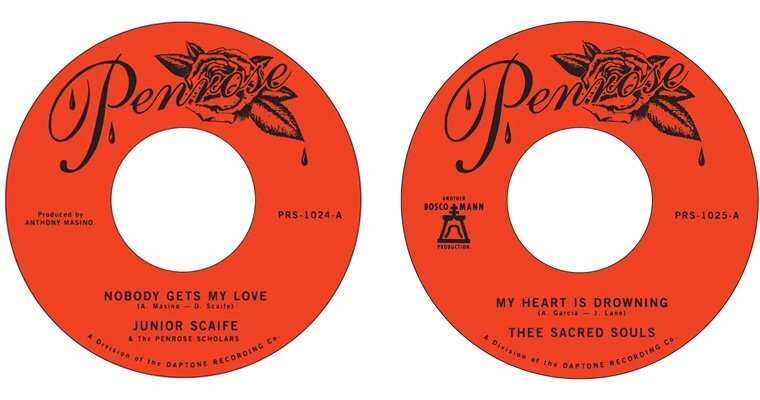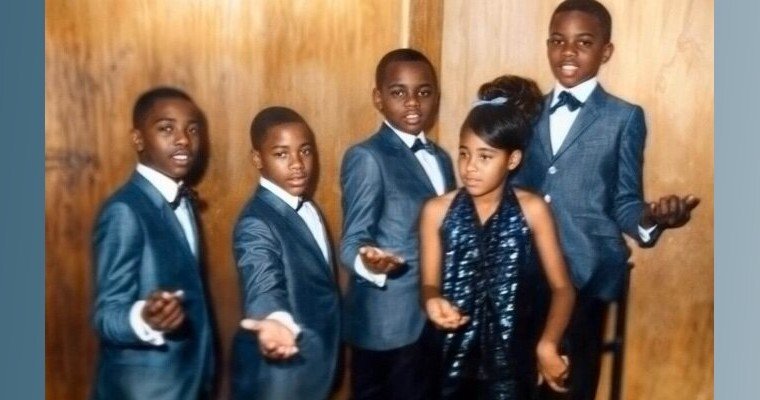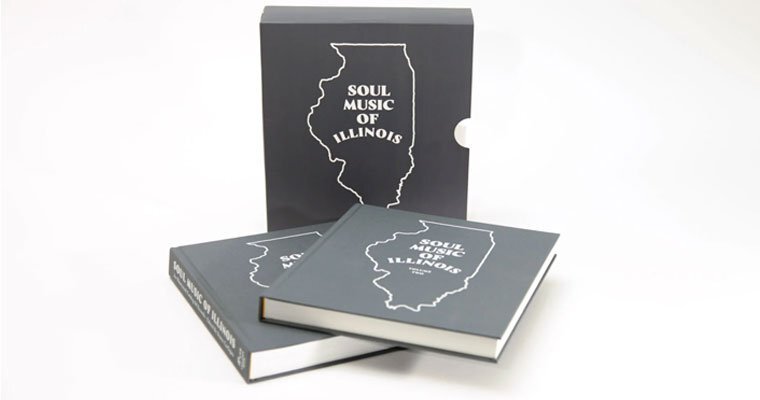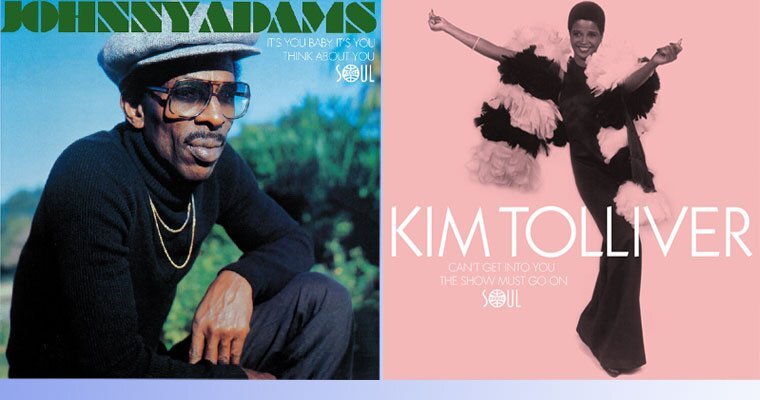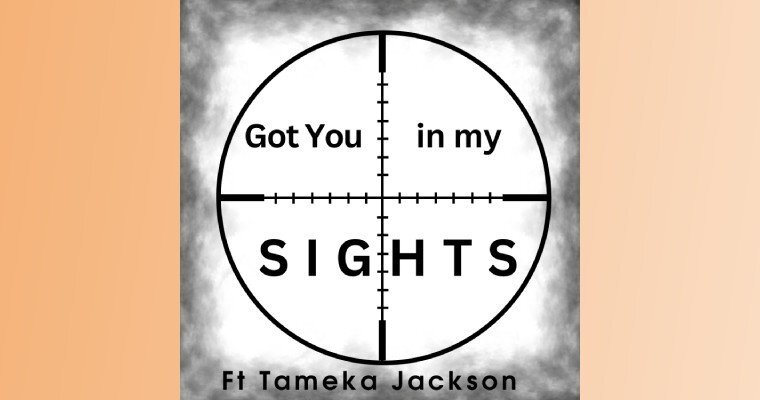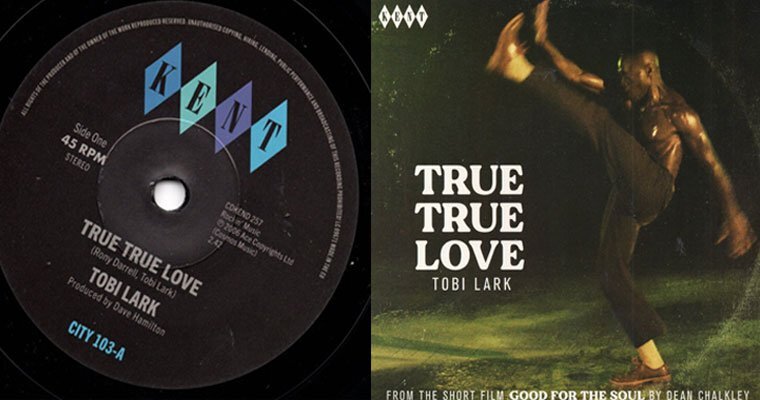Colin Day sat down with DJ, collector, soul historian and stalwart of the Northern Soul scene, Andy Rix, to recall his journey into soul and give his most candid interview yet on AI music production and all things Riker…
JOURNEY INTO SOUL
So Colin, before we get into the music, AI and Riker Records, it’d be really interesting to learn a bit more about your personal history, and your journey into soul. Where did you get to prior to Riker forming in your head?
IT’S A MOD, MOD WORLD
Soul was my first love— I think it kinda taught me how to love. When I was 12—thank God— my sister got engaged to one of the best-known mods in Worcester— guy called John Haithwaite. Coolest kid you’d ever meet, and I just idolised him. He’d been a drummer and DJ full-time since he left school— massive soul fan and record collector. For years, he had a deal with the guy on the local paper who did record reviews; every week, John bought all his demos for pennies. By 1970, he had about ten thousand singles, all in brown cardboard sleeves, neatly shelved and sorted, in a big loft room. Proper party room too, it was. Orange psychedelic wallpaper, lava lamps, and a big old valve stereo that had this lovely green and orange glow and sounded just like butter.
So, you can guess where my favourite place to hang out was!
His record room was also a kinda hub for local mods, and I was like their little mascot—a mini-mod. I’d hear them raving about Tamla and Soul, Bluebeat and Rock Steady—and, of course, I wanted in. Bless him, from the second I showed an interest, John gave me a proper education. And the music just hit me right away. From that moment on, soul became my world—nothing else mattered.
I GOT THE FEVER
John was a top bloke—DJ’d at The Bankhouse and The Coppertops—and he put all his big sounds on reel-to-reel tapes for me. Mary Love, Major Lance, The Artistics, The Impressions—all those great dancers from the Twisted Wheel. He also had loads of unknowns, or “secret sounds”. He’d throw in some blues too—maybe some Doo-Wop or early soul. Made sure I knew who Bessie Smith and Lead Belly were. And I just soaked it all up. Jackie Wilson “I’m The One to Do It” was my first big rave. Used to play it, rewind, play it again, rewind—over and over. I must have worn those tapes out! Soon started buying and collecting, and next I’m DJ’ing—very shyly—in local youth clubs.
LIKE AN ITCHING IN MY HEART
So, John kicked it all off, then I guess Dave Godin took it deeper. Blues and Soul magazine was definitely the bible, Dave was the guru and I used to hang on his every word. Then there were those nightclub ads! They’d often brag-off about the rare records they played—you know: “Hear sounds like Suffering City, Baby Reconsider”. I’d write them all down in exercise books—I loved that.
Maybe it was those ads that did it. Soon I was aching, just desperate, to go “Up North” and hear the sounds even John didn’t have. It was a quest.
When you escaped from the loft room and made it to an actual venue what was it like ?
You never forget your first time, do you? So, it started with an all-dayer in Stoke. I was 15 and I hoped they weren’t so strict on the door. Made it to my first all-nighter at Va Va’s in ’73. Then came Wigan, Blackpool, Whitchurch, Nottingham Palais, Yate—you know. And I was just a typical soul boy: loved the music, collecting, dancing, the look, the pills— everything. Made some great mates… yeah, it was very special.
So how long were you active on the scene?
Well, by the time the eighties roll around, my career was kinda tugging me away, and I had a lot less time. Wigan had closed and it felt like the last days of something. Sold the best of my collection and found myself DJ’ing full time playing disco. Worked in clubs like Derby Tiffany’s—shiny suit, curly perm, fake palm trees, and a glitter ball the size of Mars—you know the vibe. Shared a big revolving stage with a band who did covers of Street Life and Happy Radio—actually, really good covers, now I think back. By then, I was spinning and getting into jazz-fun my music tastes were getting broader.
RADIO DAYS
Anyway, in 1982 a chance at radio came, and I jumped at it. Was on the air for two or three years, but… I don’t know—the real buzz, for me, came behind the scenes. I just loved making promos, jingles, commercials—and the technical side really clicked. So, I just kind of grooved along into that little world. Then, built a studio, started a production company… and that kicked off a pretty long career doing voiceovers and jingles.
But the love of soul never died. How could it?
I bought all the compilations. Stayed connected, best I could. Typical of many folks, suppose.
HOW DID RIKER HAPPEN?
I think a lot of people fell off the scene around that time. So, let’s jump forward… how exactly did Riker come about?
Well, that’s all been one sweet, crazy, happy accident! Over the years, I’ve produced—I don’t know—maybe 200 jingles. By around 2015, that business was slowing down—going out of fashion, I guess. I kept busy doing voiceovers— that’s been another passion—but I surely missed my music production. This is the bit where my wife says THAT THING that changed the whole course of my life!
SONGWRITING
So, maybe she’s picking up a bit of creative frustration on my part—I don’t know. But one day, she kinda lays down a little challenge. I’m noodling away on the guitar, when she slides up and says, “Hey, why don’t you write a song one day…. Bet you could write a song… Why don’t you write me a love song?” It was a playful thing—you know?
Songwriting, though? It seemed like something other people did. Just wasn’t on my radar. I’d never written anything longer than 30 seconds and certainly nothing with meaning! I mean, I’m the guy who wrote the Phil Belly jingle: “You’ll get what you want, at Phil Belly’s Rest-Er-Ont”. Not my finest hour!
But I did like the idea, it tickled me, so I said I’d have a crack. Two conditions— the song didn’t have to be modern, and I’d never have to play it to anyone else, just her. Yeah, I know, ironic!
So, I burrowed myself away and set about it. Wrote something called “Why’d It Take So Long.” Come Christmas Eve, we sat by the tree—just my soulmate, me, and a guitar—and I did the big premiere. Corny, yeah, I know. But Emma loved it, I got to scratch my creative itch—and bag about a hundred brownie points! Win, win, win…
IT’S OUR THING
So then, it just became a thing, a little tradition. Christmas, birthdays—sometimes on Valentines—I’d write my lover a love song. And I loved the whole process—kept me busy and out of trouble, anyway.
And, yeah, the songs were far from modern. Sixties soul has been my biggest passion, so maybe no surprise, I was writing in that style. Truth is, I couldn’t write a current-day song if I tried. I only used to wish that Levi Stubbs or David Ruffin would carry the vocals—not me!
Anyway, fast forward a few years, and I’ve built up an album’s worth of songs. Emma had a special birthday coming up, so I thought—why not make a private LP? I’d do the vocals and hook up with session guys I’d known for years. The plan was to press a handful of copies: one for her birthday and keep a couple for family—hope it might become a little keepsake.
UNSATISFIED
What a lovely idea! So how did it go?
Yeah—not great, actually. We did a couple of tracks, but my voice was never gonna cut it— clearly, I am not Levi Stubbs. And trying to recreate that sixties vibe… well, that’s like chasing shadows in the dark. Those cats played in a different way. So… I just shelved the idea.
Until last year. Then, everything changed.
ONE WONDERFUL MOMENT
Out of nowhere, some mind-blowing AI-powered music software dropped into my lap—and BOOM! Suddenly—maybe—I had the tools to produce those songs how I’d heard them—or even better! Now, I’m thinking that private album is right back on the front burner.
So, I got a bit obsessed with it. Late nights. Early mornings. Didn’t matter. Just wanted to learn it all—try and tame the beast. When I started on the songs in my locker—wow, that was a massive pinch-yourself moment. All of a sudden, I’m the pilot of a time machine and I’ve gone straight back to 1966! The sounds, the textures—just jaw-dropping. Ok, yeah, maybe lacking something here and there—just a bit of spice— so why not push it some more? Reached out to my session guys again, started playing with overdubs—guitar, percussion, saxes, keyboards. Now, I’m thinking “Yeah, this is cooking”—and bingo! Here we are.
WHAT ABOUT THE MUSIC?
So, it feels like the process was very organic and wasn’t part of a five-year game plan—it just evolved, which is great to hear. Now, this concept of creating music through AI, you mentioned this amazing software that arrived. Can you walk us through it a bit? You said you used some studio guys you’ve known for years. How do you decide what part of the music is created by AI, and what part is real? More specifically, how does the vocal part work? Because it’s clear you have a broad range of influences and references, and I’m curious how you mix all that in.”
Yeah, so obviously, the song has always come first—I’ve got worked that out on guitar… lyrics can take me an age… chords, melody. As for the prompting and programming, you’ve really got an infinity of choices. Where do you start? Production style, vocal arrangement, tempo and key, the phrasing and the changes—but it’s a dark and unpredictable art. The software is a beast, and it doesn’t always behave. Plus, it’s got no taste. It’s full of data, but it’s never been on a date—you know?
And the overdubs? The live instruments—where do they come in?
Well, that’s the secret sauce, if you like. The extra bit of spice, the musicality. They beef things up and add some soul to groove. It’s the human touch. It’s usually pretty obvious what each song needs. Mixing them is a challenge, but it’s a big part of the fun too. As for the vocals, yeah, it still blows my mind that they come straight from the software. It’s amazing how lifelike and expressive they can be—spooky, really. All those subtle nuances— the mouth noises, the breaths, those little swoops up into the right note. I get tingles all the time—it’s so cool.
So, does it work like a library? I mean, can you just order in someone who sounds like David Ruffin, Levi Stubbs, Valerie Simpson, or even Bessie Smith? Or is it a bit potluck?
Well, the software will give you endless options and yeah, you can clone just about any voice, but I won’t. If something sounds close to an established artist, I move on. It’s about respect—plus, what’s the point anyway? I only want to do something original.
KISSING FROGS
And definitely, yeah, there’s some luck involved. I have to kiss a shed-load of frogs, and I might go through hundreds of iterations on a song before I get even close to making a meaningful start. And after that, I can remix in endless ways, spend some hours fine-tuning the vocal phrasing—boy, that’s a rabbit hole—and then, with luck, you may have roughly the first 30 seconds. After that, the real work begins. Or… I might scrap it and start over!
It sounds like a bit of a battle between man and machine…
Ha! It definitely can be. But I see the software more like a bastard of a bandmate. Sometimes he behaves, a lot of times he goes rogue. And, just now and then, he’ll come up with a moment of pure magic. Still, these are wonderful tools for songwriters to collaborate with. And they’re still in early stages—I’m sure they’ll get better. Can’t wait to see where they go.
PUTTING IT OUT THERE
So, you had access to software that allowed you to create music you loved, drawing on your personal history and broad influences. And you had several songs developed. But making that transition from creating for family to sharing it with the public—that must have felt like a significant step. What made you decide to take the leap?
Yeah, putting it out there was a big step. The songs were personal, never meant for public ears, not meant to be commercial. But Emma was mad keen for me to share them, and I was curious what other soulies might think. So, I took a deep breath, sent out some carvers to DJs I’d admired for years. Maybe I was looking for validation, a bit of an ego rub. Just said the tracks were “previously unreleased” (which they were) and I wondered if they’d pass the sniff test…
I guess they did because the reaction was instant and amazing! They all assumed the tracks came from some dusty old tape vault. But I had never said that. Sure, I could have corrected their assumptions, but I kept things close to my chest for now—had my reasons. Next thing, my phone keeps pinging, and they’re all asking who has the rights and when they can get a release? That set me thinking…
THINGS ARE GETTING HOT
Then it all gets a bit crazy. Tats Taylor posts a clip of “Coz I’m Ready” on Facebook, and it gets a festival of love hearts. The carvers are now getting spins at venues, Dean Anderson and Richard Searling start blasting them on their radio shows. And now I’m like the Rhinestone Cowboy, you know, —offers coming over the phone! It’s a little whirlwind, and before I know, I’m making plans to start a label and get some singles out there.
And that’s how Riker Records all came about
So how did you feel about sharing these private songs with the wider world?
Honestly? Had no time to think too deep about it. The whole thing quickly got its own steam, and I swept along with it. But remember, I’m still sitting on this great big, massive secret. Still, no-one knew these are modern-day songs and productions. And now I’m getting sleepless nights, really anxious. I’m worried people might feel deceived, or like it was some kind of social experiment. It wasn’t—I’m not that clever—but you might have taken it that way. The time had come to tell the full story.
THE BIG REVEAL
I can imagine that was a tough call. But it seems like you had to take a calculated risk—not by being deceptive, but by being a little guarded. Correct me if I’m wrong, but it feels like you wanted the music to be judged on its own merits, without people making assumptions before they even heard it…
Yes, that’s exactly it. I just wanted honest, unbiased opinions without the expectation bias. And I think—I hope—it was the right way to do it. But, come on— the whole thing was implausible from the start, wasn’t it? I mean, how come this unknown soul fan from the Midlands can stumble on a hoard of unknown soul records, when people like yourself have spent decades trying to track down unreleased goodies?
So, I confided in some big Riker supporters, and… well, they were just so cool about the whole thing! Dean Anderson asked me onto his Sounds of Soul radio show and that’s when I pulled back the curtain—told the whole story.
THE TRUTH IS OUT THERE
Dean and I have known each other since we were teenagers, so yes, we’d had our conversations. And, like many others, I assumed you’d hit upon a treasure trove of previously unreleased music.
I remember saying to you early on—these weren’t cheap sessions. This wasn’t street soul. The orchestration, the production—this was top-end stuff. Something about it didn’t quite add up. The big reveal must have been daunting for you personally.
It was an anxious time, and of course, I was bricking it. Would people still dig the music? Would they feel let down? And was it right to leak these tunes out incognito? Maybe there was a wee bit of mischief in the way I did it, but it went way deeper than that.
AND THE REACTION?
So how did you think people would react, or what did you hope the outcome would be, you know, other than a public stoning? And how has the reaction been since then?
Oh, it’s been incredible – really humbling. Had so many nice comments and warm words. Yeah, there’s definitely a big band of Riker fans out there—I can’t thank them enough. Then, there’s another chunk of people typically saying, “Not sure how I feel about the AI part… but actually, this stuff is ok...”
And look, I’m not naïve. I know there are some who see this as the work of the devil and will walk away. I totally get that. If it’s not for them, that’s okay. Look, I won’t use the term “soul police”—it’s insulting. If people are passionate about their music—any music—then it’s nothing but respect from me. Music is the greatest thing mankind ever did. But at the same time, it’s just music, you know?
SCIENTISTS OF SOUL
I can imagine it’s quite confronting for some people. Have you had much feedback about the whole AI thing?
Oh yeah – it is a lot to get your head around. AI feels like something new, maybe a bit threatening. It weirds me out too, sometimes. But I think, in the right hands, it can be an amazing tool. You see, I think of my stuff as kind of sculptures in sound. The AI is just a tool to bring them to life. The songs are heartfelt but I’ve never claimed they deserve the same respect as traditional 60s soul—but hey, maybe there’s something interesting here?
Now, I’m sure some folks might worry that “robot soul music” could flood the scene or dilute what we have. And I get that. But it’s never been my aim—I’ve only got about twenty songs, so it ain’t gonna come from me. And I don’t see it happening anyway; the dancers and DJs will always decide. At the same time, I do hope other writers might get inspired and build on what I’ve done.
So, was I bracing for a public stoning? Sure, I was worried people might feel let down— there’s so much romance in undiscovered soul—you can’t deny that. But it’s been great, folks have been very fair and open minded…
Well, you can’t ask for more than that, really, can you? I mean, my view is there’s space for everything, space for everybody—and if it’s not your thing, just keep walking by. For it to have caused a huge backlash would’ve felt, well… a bit disrespectful to what you’ve created. At the end of the day, how the music was made is almost academic.
The AI bit is part of the process, sure—but it’s not the whole story. Yeah, if a song strikes a chord or the beat makes you wanna move, then does it matter? I guess that’s the debate. But look, I don’t want to downplay the role AI plays—without it, I couldn’t get the vibe that I do. There was some voodoo magic in that sixties sound and the AI can nail it. That said, the machine is basically dumb. It doesn’t wake up one morning and think, “I know! Today, I’ll produce a beat ballad with a Bacharach feel and swirly strings.” The software has no feeling, no emotion. It needs a proper song, a bit of craft and a lot of love. I hope that comes through…
WHAT ABOUT THE MUSIC…
Oh, I think it does. You were kind enough to share some tracks with me, and I haven’t sat down with headphones to interrogate them. Instead, I’ve had them playing in the house while I’ve been cooking or doing other things—just letting them soak in. They feel fresh but familiar too.
Lenny & The Illustrators came on, and it instantly took me somewhere—evoked memories of Ray Pollard. And then Taff Bryan—something about it kept tugging at my memory, and I found myself thinking of Christine Cooper’s SOS. It’s subtle, but it’s there, and that’s what hooked me. So yeah—I’m enjoying what Riker Records is doing!
FUTURE PLANS
So, you’ve revealed the music’s there, you’ve got an album’s worth, and you’re on the cusp of launching Riker as a proper label. What are the plans? I assume you’re not planning to do what Eddie Singleton did at Shrine—pressing 13 tracks at the same time for release and then having to watch as the label imploded! I guess you’re spreading them out over time…
Poor old Eddie! No, we’re not that ambitious. My dream is to bring out an album later in this year, but we’ll start with a couple of singles first—test the water with Betty J. Williams and Lenny and the Illustrators.
LENNY AND THE ILLUSTRATORS
Lenny! Ah yes—great name! And that reminds me—I’ve been curious: where do those band and artist names come from?”
Good question! Obviously, the artists only live in my imagination—that’s why I like when people have called it Fantasy Soul. And because they don’t exist, we’ve pledged the artist share of record sale royalties to the Stax Academy in Memphis. It’s a way to show respect, honour the legacy. But the names, yeah—they all have personal meaning.
Take Lenny and The Illustrators—they’re named after my father-in-law. He was another cool guy. Did fantastic illustrations, mostly book jackets—really gifted. Len was the name he worked under professionally. It was like his painting name. So, that was a little nod to him.”
WRAP IT UP
That’s a good call on the Stax Academy—nice gesture. Look, before we finish, I’ve got to mention one of my favourite lines from your songs: was it Harbor Drive Five? “So what if we scandalise your family? You and me had to be.” I love that line. It’s so sixties, but I’ve never heard it before. Where do lines like that come from?
Thanks, hey, yeah—it’s all down to the Mrs.—one hundred percent. I’ve just taken little bits of our life and put them to music. She’s my inspiration, my secret weapon.
Well, they say the best sounds come from the heart—and I think you’ve certainly proved that point, Colin. Thank you for being so open and honest about the world of Riker. It's certainly captured the attention of many, who, I believe, will judge it on its own merits now the truth is out there. I really do wish you every success with the label which I'm sure will happen.
Colin Day & Andy Rix
---------------------------------------------------------------------
Website
https://www.rikerrecords.com/
Media Related Links
